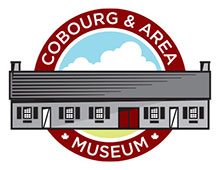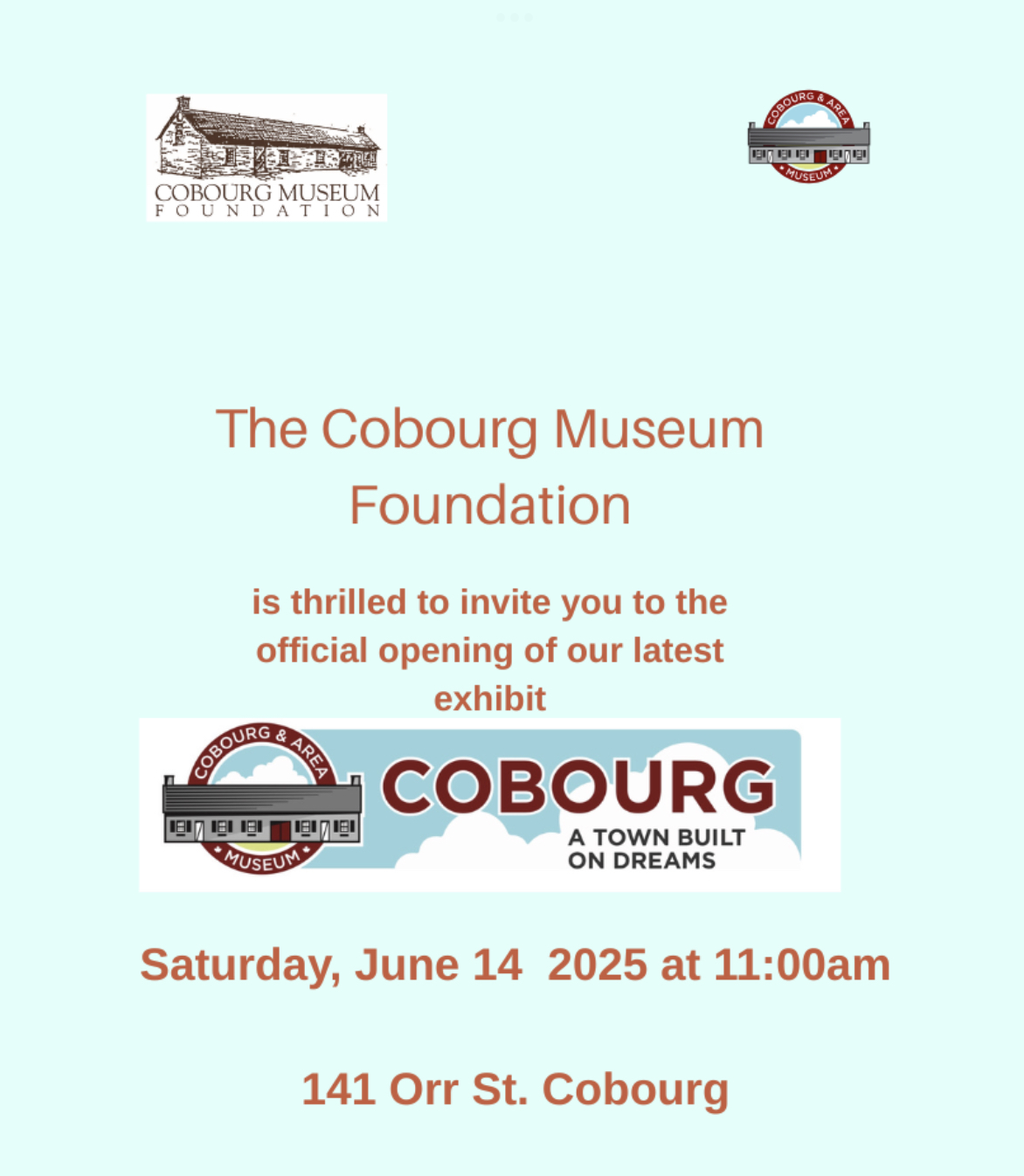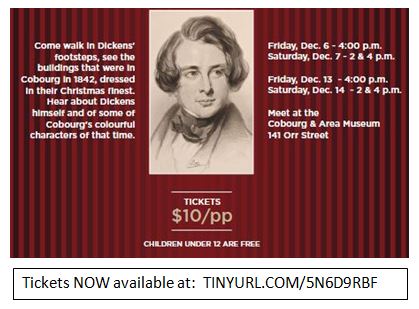Our Town’s Story
Cobourg proudly proclaims on its street signs the founding date of 1798. This is as much a convenience as a first date, as it records the first accurate list of settlers in what became Cobourg proper. Settlement of a patchy nature doubtless preceded that date. The two main areas of first settlement were the quiet residential area at the mouth of what is now known as Cobourg Creek (referred to in the past as Factory Creek), in the west end of town, and the corner of Division and King Sts; the hub of the downtown core. The earliest known settler of the downtown was Eliud Nickerson who, in about 1798, built his cabin by the small creek which formed the modern harbour bay and which now flows through conduits under King St. Another early settler, Elias Jones, built a small landing and general store at the mouth of the larger watercourse, Cobourg Creek, in 1797 or so.
In 1804 the shipwreck of a government packet, the schooner H.M.S. Speedy, carrying a number of government officials to the then district headquarters on Presqu’ile Point caused the government in York (Toronto) to rethink the location of the county court house and government offices. They chose the little settlement of Amherst, just outside old Cobourg near what was then the major east-west road from York to Kingston, to be the new county seat.
This was the making of Cobourg. Following the War of 1812, the government rerouted the main road to follow the modern Hwy 2 (now County Road 2), which constitutes Cobourg’s King St. with this new road and with the influx of retired British Army and Navy officers that followed the end of the Napoleonic War, Cobourg grew rapidly, in a short time greatly outstripping tiny Amherst. In 1825, Peter Robinson led an immigration of over 2,000 almost destitute Irish through Cobourg to settle north of Rice Lake on the Otonabee River, thus founding the modern city of Peterborough.
With that area opening up, Cobourg began, in 1828, to build an artificial harbour so as to secure for itself the monopoly of trade to the back regions. Soon the Cobourgites were sponsoring the most up-to-date roads and stage coaches to cater to this growth. The principal supporter of these ventures was William Weller, whose coaches dominated the transport trade between Toronto and Kingston until the middle of the 19th century. He made his home and base of operations in Cobourg.
Soon it was felt that normal roads were inadequate for the amount of commerce Cobourg was expecting from the back townships, so the townspeople embarked on the ambitious scheme of building a railway. Initially proposed in 1834, the scheme was beset with financial problems and the laying of track was not begun until 1853. By that point the project had gone beyond simply linking Rice Lake to Cobourg as an alternative to using the Trent waterway. It now included an ambitious plan for a railroad bridge right across the three mile width of Rice Lake, so as to make a direct link to Peterborough.
Completely entranced with their dreams of a commercial empire ultimately stretching as far as Georgian Bay, the Cobourgites began, in 1856, work on a town hall which they intended as a tribute to their future prosperity. Victoria Hall, which now dominates the main street, was completed in l860 and opened by Albert Edward, the Prince of Wales (later Edward VII). This was just about the same time as the Cobourg and Peterborough Railway Co. finally had to give up hope of ever making its adventurous bridge work. The ice in winter, shoddy workmanship by the original contractors and the invincible Rice Lake mud all had their share in the bridge’s failure. Numerous attempts were made to fix the bridge, all ending in plunging Cobourg deeper into debt.
In the late 1860’s a number of Pittsburgh steelmakers realized that the iron works at Marmora, north and east of Hastings, could provide ore for their mills at little expense if the ore could be shipped up Rice Lake to the railway dock at Harwood, bypassing the bridge entirely. This traffic in ore brought Cobourg some measure of wealth until the mines were exhausted in the l880’s.
A much greater boon, however, arose from the fact that by the late nineteenth century the tourism industry was on the march. Wealthy industrialists from the United States discovered Cobourg as the perfect spot in which to establish summer homes. In 1874 the grand Arlington Hotel – reputed to be the greatest hotel between Toronto and Montreal – opened on the north edge of what is now Victoria Park. For fifty years the Arlington hosted the highest society in Ontario. Luminaries of the stage, wealthy Southern gentlemen who refused to vacation in the Yankee north, the elite society of Toronto, Cleveland and northern New York, all found their way to Cobourg.
In 1904 daily steam ferry service was introduced between Cobourg and Rochester, New York, the steamships also carrying coal for the Grand Trunk Railway which refuelled in Cobourg. Later this ferry service adapted itself to the automobile, the cars being loaded onto railway cars for the passage.
As a legacy of its days as a major industrial port, Cobourg soon became a depot for oil for the diesel engines of modern railways and for Canada Steamship lines. Now Cobourg’s harbour is almost universally declared to be one of the finest small-craft harbours on Lake Ontario.
The above article was authored by Colin Caldwell, a long time resident of Cobourg and avid researcher and chronicler of local history and folklore. For further historical facts and discussions, we recommend the following:
- A website that should not be missed by anyone with an interest in the history and built heritage of this area is found at www.cobourghistory.ca. This site, developed and maintained by CMF member John Draper, is an excellent overview account of history of the Town and it’s early citizens, and incorporates many links to source material and specific related topics, including the Barracks building.
- Students involved in local history studies at the old West High School (one block north of the Cobourg & Area Museum but now closed) posted several articles on local history on the site www.eagle.ca/westhistory It includes a paper titled The Barracks Project (History of the Barracks, Clues from the Building’s Construction). The students had direction and encouragement from Chris Robins, who was a faculty member at the school and also a member of the CMF Board.
- An interesting and amusing account of local history, Cobourg Now and Then, has been written by Art Cockerill of Cobourg. It can be found on line at www.achart.ca/articles/publications/cobourg.htm.
We have begun work on an interactive Timeline of Cobourg’s History. If you are interested in volunteering to work on this project, please let is know!






